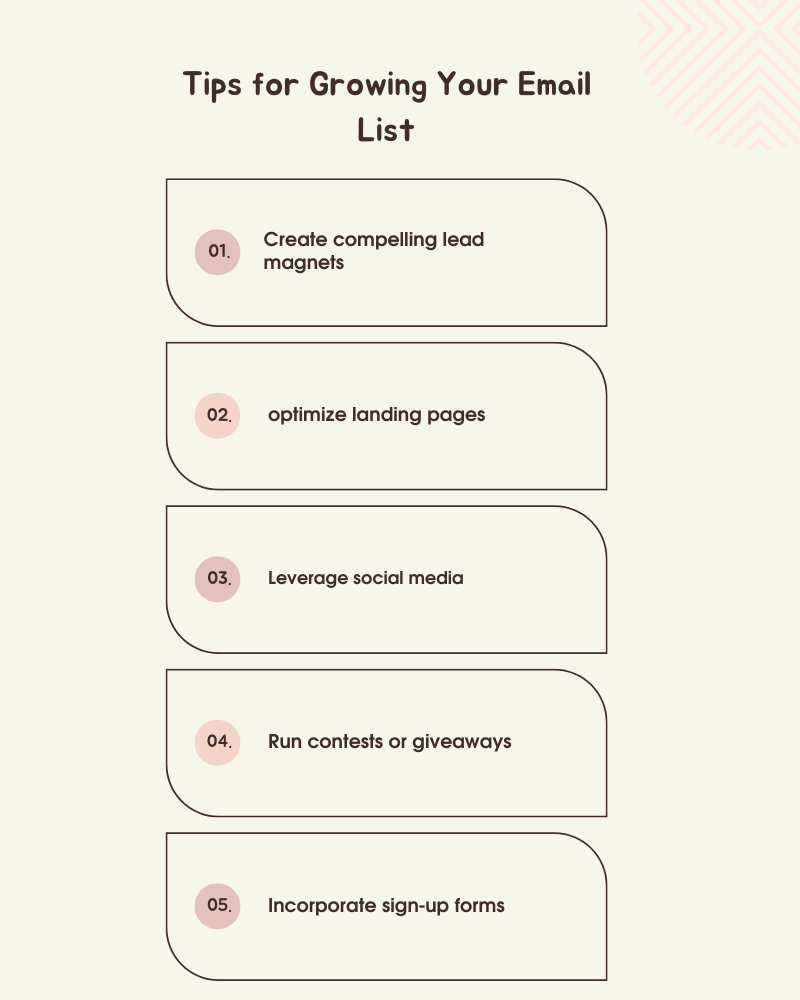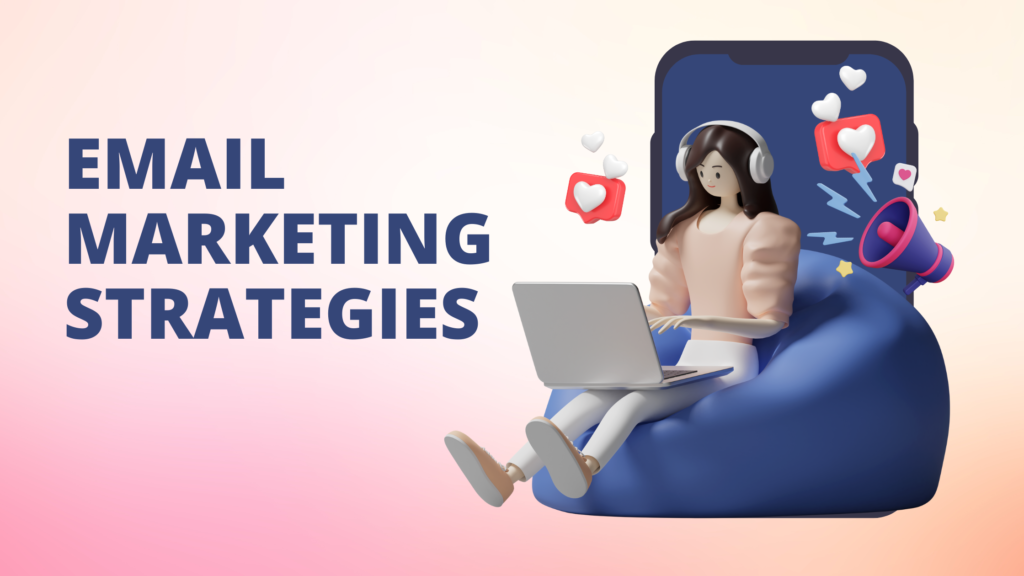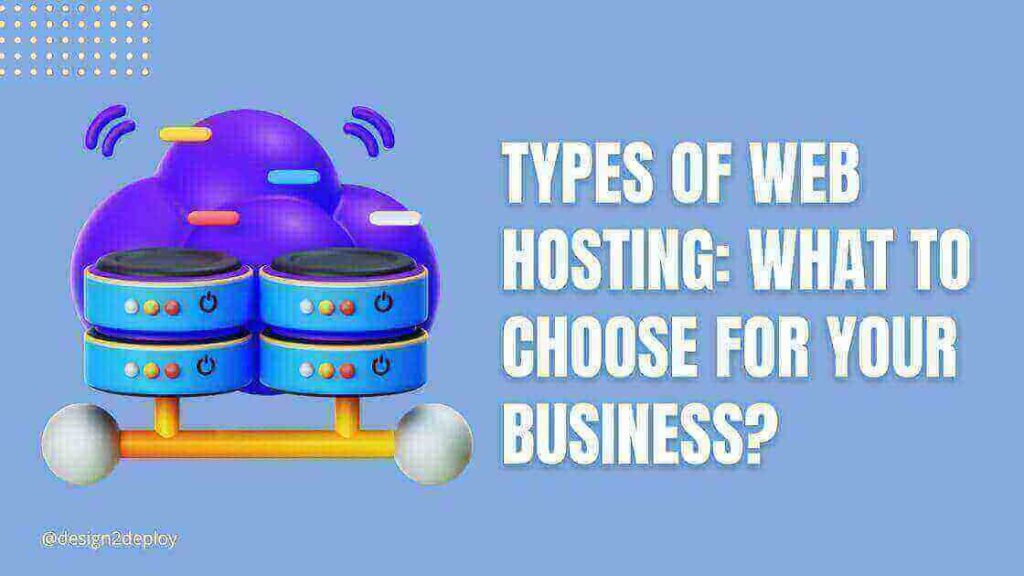With millions of people checking their inboxes daily, email is a powerful tool to connect with leads and drive conversions.
But simply sending generic emails won’t work. To make an impact and stand out from the competition, you need to focus on building strong relationships with your leads. By understanding their needs, crafting compelling content, and personalizing your messages, you can create meaningful connections that not only increase engagement but also drive sales.
In this blog post, we’ll explore effective strategies for email marketing success. We’ll discuss the importance of understanding your target audience and how it plays a crucial role in building relationships. We’ll also share techniques for creating engaging email content that resonates with your readers.
Importance of Building Relationships with Leads
Building strong relationships with leads is crucial for the success of your email marketing efforts. When you take the time to nurture these relationships, it can lead to increased engagement, higher conversion rates, and ultimately more sales.
The main reason why building relationships with leads is so important is that it allows you to establish trust and credibility. When people trust you and see that you consistently provide value through your emails, they are more likely to open, read, and take action on your messages.
Moreover, building relationships helps you understand your audience better. By engaging in conversations with your leads and paying attention to their responses and behaviors, you can gain valuable insights into their wants, needs, and pain points. This knowledge will enable you to tailor your email content specifically towards them.

Personalization is another key factor in building relationships with leads. People want to feel like they are being spoken directly to rather than receiving generic mass emails. By segmenting your email list based on factors such as demographics or past purchase history, you can send targeted messages that resonate with each individual subscriber.
Additionally, get creative with your email content. Don’t be afraid to experiment with different formats such as videos or interactive elements that grab attention. Keep in mind that relevance is key – ensure that every email provides value or solves a problem for your subscribers.
i) Understanding Your Target Audience
Understanding your target audience is one of the most crucial steps for email marketing success. It involves getting to know your subscribers’ needs, preferences, and interests so that you can tailor your emails to resonate with them.
Start by conducting thorough market research to gather insights about your target audience. You can use surveys, interviews, or social media analytics to determine demographic information such as age, gender, location, and occupation. Additionally, delve deeper into psychographic factors like lifestyle choices and personal values.
Once you have a clear picture of who your audience is, segment them into different groups based on their characteristics. This will allow you to create more targeted and personalized emails that speak directly to their specific needs and interests.
Another important factor in understanding your target audience is identifying their pain points or challenges. By knowing what keeps them up at night or what problems they are trying to solve in their lives or businesses, you can position yourself as a valuable solution provider through your email content.
In addition to researching demographics and pain points, pay attention to how your target audience interacts with digital platforms. Are they active on social media? Do they prefer reading blogs or watching videos? Understanding these preferences will help you choose the right channels for reaching out via email.
Remember that understanding your target audience should be an ongoing process. Keep track of changes in trends and consumer behavior so that you can continually adapt your email marketing strategies accordingly.
ii) Crafting Effective Email Content
Crafting effective email content is crucial for successful email marketing. Here are some strategies to help you craft compelling email content that resonates with your audience.
It’s important to understand the needs and preferences of your target audience. What challenges do they face? What solutions are they seeking? By knowing their pain points, you can tailor your email content to address these issues directly. This will show your leads that you understand their concerns and position yourself as an expert in solving their problems.
To make your emails more engaging, focus on delivering value-packed information. Provide tips, tricks, or industry insights that will genuinely benefit your readers. Offer exclusive discounts or promotions as incentives for opening and reading the entire email. Remember, the goal is not just to sell but also to establish trust and build a long-term relationship with your leads.
Another essential element of effective email content is personalization. Use merge tags or dynamic fields to include each lead’s name in the subject line or throughout the body of the message. Personalization shows recipients that this isn’t just another generic mass email and it’s specifically crafted for them.
Additionally, segmentation allows you to target different segments of your audience based on specific criteria such as demographics or purchase history. Tailoring content according to these segments enables you to send relevant messages tailored to each group’s interests and needs.
When creating an email campaign, always have a clear call-to-action (CTA). Whether it’s directing leads towards making a purchase, signing up for a webinar, or downloading an e-book, make sure there is a clear next step outlined in every email.
By following these strategies, you can create effective email content.
iii) Utilizing Personalization and Segmentation
In order to make the most out of your email campaigns, it’s important to use personalization and segmentation.
Personalization means going beyond just adding someone’s name to the email. It’s about understanding what your leads want and need and delivering messages that are tailored to them.
Segmentation is the process of dividing your email list into smaller groups based on common characteristics or behaviors. For example, you might have one segment for new subscribers, another for loyal customers, and a third for those who haven’t made a purchase in a while. This allows you to send targeted messages to each group.
When crafting your emails, use dynamic content blocks to change elements such as product recommendations or offers based on each recipient’s past interactions with your brand. Personalize subject lines, preheader text, sender names, and send times for maximum impact.
By using personalization and segmentation effectively, you can increase open rates, and click-through rates, and ultimately drive conversions. Take the time to analyze your audience and gather relevant data to start implementing these strategies. You’ll see how tailored messaging can make all the difference in building stronger relationships with potential customers and achieving better email marketing results.
Tips for Growing Your Email List
Here are some tips to continually grow your email list:

- Create compelling lead magnets: Offer valuable and relevant content, such as e-books, guides, or exclusive discounts, in exchange for email addresses. Make sure your lead magnet aligns with the interests and needs of your target audience.
- optimize landing pages: Design visually appealing landing pages that communicate the value of subscribing to your email list. Use persuasive copywriting techniques to encourage visitors to take action and provide their email addresses.
- Leverage social media: Promote your email list on social media platforms by sharing snippets of valuable content that can only be accessed through a subscription. Encourage followers to share and recommend your content to reach a wider audience.
- Run contests or giveaways: Engage users by hosting contests or giveaways where participants must subscribe to your email list for a chance to win prizes or gain access to exclusive offers. This will not only grow your subscriber base but also generate buzz around your brand.
- Incorporate sign-up forms: Place prominent sign-up forms on key pages of your website, including the homepage, blog posts, and product pages. Additionally, consider adding pop-ups or slide-ins at strategic moments during user browsing sessions.
- Collaborate with influencers: Partner with influencers in your industry who have a substantial following and ask them to promote your email list among their audience base through sponsored posts or guest blogging opportunities.
- Personalize CTAs (calls-to-action): Tailor calls-to-action based on individual user behavior and preferences using marketing automation tools like dynamic content insertion or behavioral triggers. This helps increase conversions from casual website visitors into loyal subscribers.
Remember, consistently providing value through engaging emails is important for retaining subscribers once they join your list. To maximize growth potential, it’s important to regularly analyze data and make adjustments based on subscriber feedback and engagement metrics.
Conclusion
Email marketing remains a powerful tool for businesses to connect and engage with their leads. By implementing effective strategies, you can build strong relationships that will ultimately lead to increased conversions and sales.
By implementing the above-mentioned strategies consistently while staying updated with industry trends and best practices in email marketing, you’ll be well-equipped to drive success in building relationships with leads through effective email communication.



